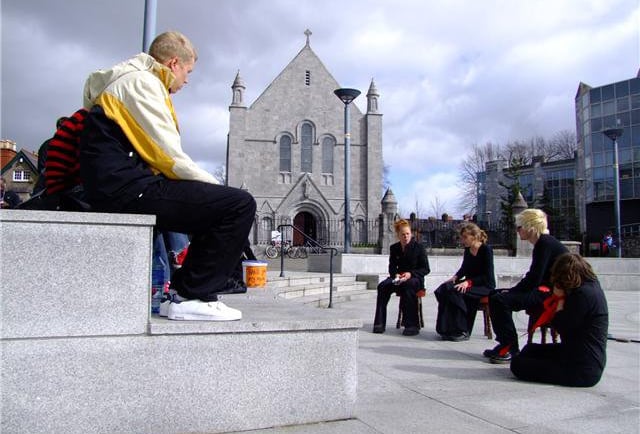Seven Jewish Children- Then and Now (2009-2025)
Seven Jewish Children-The play, a powerful, brief, raw exploration of the Israeli-Palestinian conflict at a human level, was meant to provoke thought, raise awareness, and support humanitarian aid for Gaza. Instead, I and my cast were confronted with accusations of antisemitism and even received death threats.
Yvonne Coughlan
6/20/20253 min read


Seven Jewish Children - Then and Now
Standing for Truth: Reflections on Seven Jewish Children
By Yvonne Coughlan
When I directed Seven Jewish Children by Caryl Churchill back in 2009, I never imagined the storm it would unleash. It was written without stage directions, and therefore allowed much room for creative expression and audience interpretation. The play, a powerful, brief, raw exploration of the Israeli-Palestinian conflict at a human level, was meant to provoke thought, raise awareness, and support humanitarian aid for Gaza. Instead, I and my cast were confronted with accusations of antisemitism and even received death threats.
Let me say clearly, from the outset: I am not antisemitic. I do not and never have held prejudice against Jewish people, or indeed any religious community. I believe in the dignity, freedom, and humanity of all people, regardless of race, belief, or background. To criticise the policies of a state is not to condemn a people or a faith. It is a call for accountability and justice where it is due.
It was especially distressing, then, to see lies printed in The (London) Jewish Chronicle, which falsely claimed that one of our venues was threatened by us to force the play to go ahead. In truth, that venue was threatened into cancelling by those who opposed the play. This reordering of events, to fit a political narrative, was a shocking realisation for me, and an early career lesson in how distortion and fear are used to silence.
One of the most difficult moments during that time was losing the venue, terrified, as the owners were, by threats and misinformation. It was disheartening. But then my mother, God rest her defiant soul, stepped in and said, “Bring it to my pub. Let them try to shut us down.” She was a brave woman who believed fiercely in community. And she wasn’t going to let anyone tell her daughter what she could and couldn’t do (except her, of course). Thanks to Mary Coughlan, we found a space to continue the show, The Armada, where courage and conviction outweighed fear.
I remember the darkest moment vividly: following those death threats, I gathered the brave actors who had poured their hearts into rehearsal for this work and asked them, “Should we shut this down?” Their response was unanimous and unwavering: “No. We believe in this.” Their courage reminded me of the vital role art plays in shining light on injustice, no matter how uncomfortable.
It is deeply saddening and sickening to find myself, sixteen years later, reflecting on a reality that has only worsened in Gaza. The cycle of violence, displacement, and loss has escalated far beyond what we could have imagined then. The humanitarian crisis is devastating, innocent lives caught in relentless bombardment, children growing up amid rubble, fear, and trauma.
In this tragic reality, I find solidarity in President Michael D. Higgins’s voice. In 2018, he decried Gaza’s blockade as “collective punishment” that “must be brought to an end.” And in May 2025 he said, “If you criticise Netanyahu’s policies you are then described as being anti‑Semitic. That is a disgrace and a slander.” Just yesterday at the Áras, I heard him remind us again:
“Citizens matter, not just the badly phrased exchanges between those in power.”
Cork recently hosted HeART of Gaza, an exhibition at Crane Visual in Dance Cork Firkin Crane, showcasing the artwork of Gaza’s children. The exhibition, now closed, invited people into a space of deep empathy and shared humanity. As I said at the time:
“HeART of Gaza is a profoundly moving exhibition in Crane Visual that speaks to the resilience, creativity, and spirit of its young artists. It invites everyone to experience its depth and beauty, offering a space for reflection, connection, and conversation.”
And while the exhibition has ended, the need for reflection, connection, and courageous conversation has not. We are entering a worrying moment in history. In the United States, universities are being forced to strip terms like diversity, equity, and inclusion from their charters. The language of fairness and human dignity is being erased under pressure. This chilling trend reminds us that silence and compliance are tools of oppression.
So what is the future?
For me, it is to continue shining a light through art. I remain committed to amplifying marginalised voices, resisting propaganda, and creating space for truth, even when it's uncomfortable. Because art has always been a place where we imagine better futures, and dare to demand them.
I am proud of those who stood with me then and of all who stand for justice now.
May art, truth, and compassion guide us forward.
